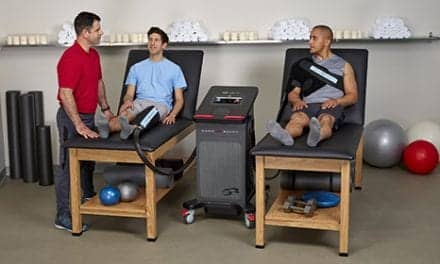An innovative exercise regimen called STEP-KOA (stepped exercise program for patients with knee osteoarthritis) may help relieve discomfort and improve function, suggests a new study published in Annals of Internal Medicine.
The program starts with gentle exercises at home and, if needed, moves to phone consultation and in-person physical therapy.
“STEP-KOA could be an efficient way to deliver exercise and physical therapy services for people with knee osteoarthritis, since it reserves the more resource-intensive steps for people who do not make improvements earlier. This could be important in health systems that are trying to maximize resources or when there is limited access to physical therapy.”
— lead author Kelli Allen, a research health scientist at the Durham VA Medical Center in North Carolina
Study: STEP-KOA or Arthritis Education
For the study, researchers from the Veterans Affairs Health Care System randomly assigned more than 300 patients with painful knee osteoarthritis to either STEP-KOA or arthritis education, a media release from HealthDay explains.
STEP-KOA starts with an internet-based exercise program. If it is not effective, patients move on to step two, which includes twice-monthly coaching phone calls for 3 months. If pain still does not improve, the patient moves on to step three, which includes in-person physical therapy.
Participants in the arthritis education group were mailed educational materials every 2 weeks.
After 9 months, 65% of patients in the STEP-KOA group progressed to step two, and 35% went on to step three.
Compared to participants who received education only, the stepped-care group had greater improvement in pain and function, the researchers report, per the release.
Lower Health Care Costs, Etc? Not So Fast…
This strategy could lower health care costs and tailor programs to patients’ needs, the study authors suggest.
However, a prominent orthopedic surgeon calls this approach backwards, saying it should start instead with physical therapy and move on to patients doing exercises on their own, the release continues.
“It seemed like this study was designed for a style of medicine that I think very few of us would appreciate. It was almost like you’re preparing for a future where there are limited resources, and you try to do everything remotely, and you put the responsibility on the patient.”
— Dr Jeffrey Schildhorn of Lenox Hill Hospital in New York City
Schildhorn notes that 90 patients dropped out of the program, and only 10% remained at step one throughout the study.
Because each patient’s knee damage and perception of pain is unique, an effective program must be individually designed. People who have mild to moderate disease should try to do whatever they can on their own, with or without in-person physical therapy. The key is to keep the joint moving with gentle exercise, he adds.
A multimodal approach that includes periodic check-ins with a therapist, being shown in person how to do the movements with follow-up by phone or video chat is a viable approach. But patients need to do their exercises at home every day, Schildhorn emphasizes.
“Someone who goes to physical therapy three times a week probably doesn’t do as well as someone who goes three times a week and practices on their own. The majority of the value comes with daily in-home, stretching exercises. If you go to physical therapy two times a week, then do nothing the other five days, there’s zero value there.”
— Dr Jeffrey Schildhorn
[Source: HealthDay]
Related Content:
Racket Sports’ Speedy Effect on Knee Arthritis
Consensus Document Offers Recommendations for Treating Knee Osteoarthritis
Assess Osteoarthritis by Listening to ‘Noisy Knees’





